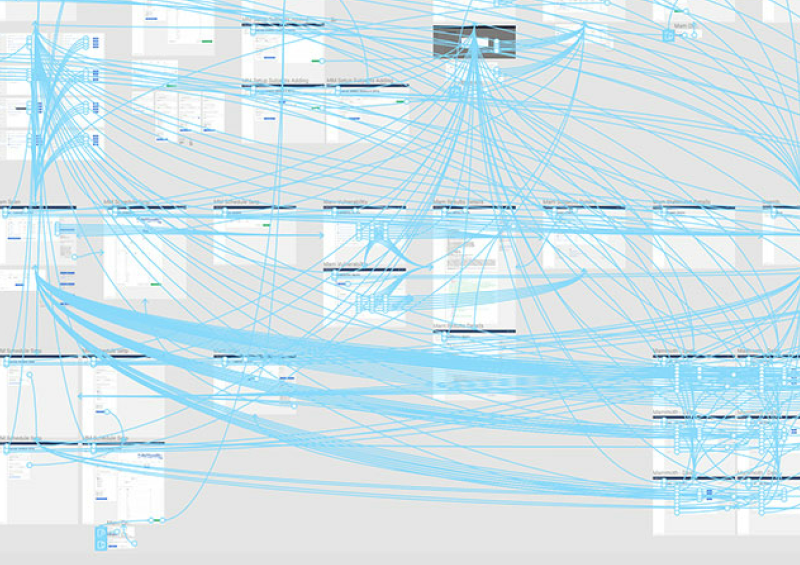I’ve written about online learning before, but I still consider myself a novice in this space. All the years of web design and user experience design didn’t prepare me for some of the challenges that came up while working on an e-learning course.
Many of the challenges faced were due to the unique kind of project this was. This project is atypical compared to a lot of e-learning examples I found during my research.
- This is a consumer facing e-learning course, as opposed to an internal training tool.
- These were additions to an existing product line of books and in-person training, but still stand-alone.
Roles
A lack of online learning expertise led us to our first lesson; establishing roles. It’s hard to notice at first, but as the project moves forward you start to see the impact. Imagine a ship turning a half degree too far early on and ending up at the wrong continent.
The SMEs had become the instructional designer (ID) as well as the expert. This just doesn’t work. An instructional designer is crucial to a project like this, an SME, without a background in instructional design and e-learning, simply cannot completely understand how to convert and structure the content in this context. An SME is also too close to the content. Things will need to be cut, broken up, and edited out. Any bias towards that content will make it impossible to do those things. An ID is better suited to make those decisions with the guidance and collaboration of the SME. They can determine what is crucial to the learning objectives.
If I could have only done one thing differently, it would have been to get these roles right. Identifying and sequencing content, which is best done by an ID, sets the tone for the rest of the project.
Process
Having a process is not enough, you have to stick to it. Having a bad process but following it is better than having the greatest process in the world but not sticking to it. Our second lesson was not only about the process but about communication. We learned that when you don’t stick to a process all the communication in the world can’t save you.
You can hold as many meetings as you want, send as many emails as you can, but without feeding that information into your process and then acting on that information, as mandated by that process, you will spin your wheels forever. It’s not like nothing will get done, just nothing will get done with any efficiency. Work gets repeated, time lost. You may even find yourself back at the drawing board at some point.
Define a cycle of creation. Use tools like project management software, or even simple to-do lists, to manage things in a centralized location. Make that information accessible to anyone who needs it. Access and up-to-date information are critical. It’s not enough to just come up with a process, you must not abandon it before you can realize it’s potential. When working in a diverse group of ages, backgrounds, and specialties, it’s difficult to find something that works for everyone. But it’s not impossible.
Whatever process is decided upon someone needs to champion it, push it through its infancy until it can find its footing. The champion must be diligent in implementing the process and keep it intact. Keep it central to the project.
Medium & Platform
In what form is the information delivered and how. Our third lesson was you should figure this out early but decide the specifics later. At some point, the phrase “cart before the horse” must have been said a dozen times over the course of 48 hours. It’s important to figure out the broad strokes early, especially if there are no pre-determined mandates about implementation or technology. It’s equally important to not get stuck on details.
We jumped from one format to the next. We had plenty of “same page” meetings, only to discover those pages were in different books the next day. What we learned was: organize your information, sequence your course, define your learning objectives and then will the format will take shape. Options become clearer as the content does.
There is no perfect way to consume e-learning, the content and audience will make those decisions for you. If there is a lot of explanation then maybe a video style course with a presenter would fit best. If the content lends itself to gamification then maybe a web or native app. As the course gets designed a path will become clearer.
Design
Look and user experience is fundamental to any product. But what we really learned was that we shouldn’t get hung up on design. Unlike content, or even UX, design is forgivable, or mediocre design is. As for executing design, it’s important to collaborate with several departments and skill sets during a project. While we had some contribution from other perspectives we needed to let designers use their judgment and experience to make decisions.
Design and visuals are important in e-learning. They help the learner absorb information and move through a course. But the visuals being there, and supporting the message, is more important than how they look. Nailing those early steps and sequencing the course, storyboarding interactions will make the impact.
Define your roles. Figure out your process. Discuss medium & platform. Prioritize production.




